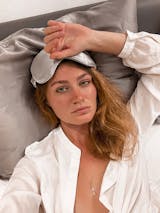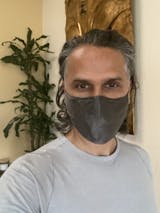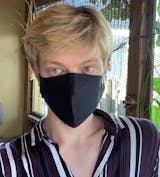Like any trend, skincare trends are constantly changing and evolving. Especially now, anyone can start a movement with a smartphone and a TikTok account, even without any qualifications. As we've seen throughout recent years, following skincare advice from your favorite influencer with zero skincare knowledge can be a dangerous and slippery slope to the hospital.
While some trends are just silly, weird, or dangerous attention-seeking stunts created by people who have too much time on their hands, some trends do hold weight and value. We'll go over the top trends in skincare right now - the good, the bad, and the just plain stupid.
The Good
There will always be good trends to follow in skincare. These are trends backed by science and are valuable and helpful in more ways than one. Usually influenced by the environment, technology, social and economic issues. Here are our top favorite trends:
Waterless Skincare
The beauty industry uses millions of gallons of water every year in its formulations and manufacturing process. Not only that but most skincare products with fillers, like water, to "bulk up" the product. The result is a less effective product with lower concentrations of the active ingredients.
This is why waterless skincare has become a trend. Waterless skincare means that a product is made without water in the formulation and the production. This means the product is in a more simple state, where the key ingredients are not diluted with meaningless and often toxic chemicals, making it more effective and sustainable.
M.S.Skincare has formulated a waterless Dual-Action Enzyme Cleansing Powder. It contains only active and effective ingredients that do not harm you or the planet. Ingredients like oat, chickpea, sandalwood, orange peel, turmeric powder, papaya enzyme powder, and bromelain to exfoliate and brighten your complexion. This also doubles up as a mask; once you've worked the powder gently over wet skin, leave it on for 5 minutes, then rinse.
Blue-Light Blocking Skincare
You may have read about blue-light blocking skincare. This became a trend thanks to the pandemic. Most of us spent most of our time at home on our screens. The blue light that emits from our devices is the same light that comes from the sun, penetrates the skin, and causes damage on a cellular level. We're told to wear sunscreen to protect our skin from the sun, but what about when we're indoors on a screen all day?
Ingredients that protect us from blue light come from botanicals, algae, certain vitamins, and UV filters. They work in various ways, but generally, they form a protective barrier against the rays. They deter the oxidation of blue light within the cells and facilitate a more youthful appearance.
Our top pick is Earth Harbor's Samphire Sea Retinol Digital Serum. It contains sea samphire, a botanical succulent that mimics retinol. Perfect for anti-aging and blue-light-blocking, with vitamin C for brightening and rejuvenating.
Minimalist Regimes
This trend became popular for two reasons.
The first one was, many people lost their jobs to COVID-19. This meant that they didn't have the finances to spend on a complete skincare regime, so consumers were looking for simplified regimes.
The second reason was, using fewer products meant less environmental impact. The less we use, the fewer companies produce, the less they damage the environment.
After cleansing and toning, skip your serums and oils and use Dew Mighty Bloom Jelly Serum Bar after cleansing and toning. This is a perfect example of skinimalism. It's a serum bar that replaces your oils, serums, moisturizers, and lotions and helps with aging, pigmentation, irritation, redness, and overall complexion.
Polyhydroxy acids (PHAs)
You've heard of AHAs and BHAs, but what about their cousin, PHAs (polyhydroxy acids)? AHAs can penetrate the top layer—the epidermis—and treat conditions like visible signs of aging and hyperpigmentation. Try M.S.Skincare's glycolic acid skin treatment.
BHAs can penetrate deeper into the dermis layer and treat conditions such as acne and scarring. Try Honua Skincare's hybrid AHA, BHA & Enzyme acid.
PHAs, on the other hand, are designed for very sensitive and acne-prone skin. Their molecular structure is larger than AHAs, making them less penetrable and irritating on the skin. Try Naturium's PHA topical acid (please note that Naturism is not 100% vegan; some products contain honey).
Non-Nano Zinc Oxide
Our coral reefs around the world are dying. This is partly due to climate change, but it's due to human intervention in some parts of the world, including sunscreen toxicity. That's why it's vital to buy reef-safe sunscreen that uses zinc oxide or titanium dioxide. Avoid reef-damaging oxybenzone, avobenzone, homosalate, octocrylene, and octinoxate.
Something else to consider is the zinc oxide particles used in sunscreen. If they are nanoparticles, they are small enough to penetrate the skin. While there hasn't been enough study done on the long-term effects of this happening, brands are now opting for non-nano zinc oxide particles in their formulations, which means they are not small enough to penetrate the skin—thus deeming them safer to use.
We absolutely love Earthwise's Farizad's Veil Sun Reflector. It's a powder formulated with only six ingredients—all sustainably sourced and wildcrafted or certified organic—including, you guessed it, non-nano zinc oxide. Mix a small amount into your favorite moisturizer to boost sun protection.
The Bad
Now that we've covered some of the good trends, let's talk about some of the bad ones. You may have heard of them, you may have even tried them. But just know that these trends are generally on the "bad" list because they either serve no real skin benefit or, in some cases, cause damage to the skin and the environment.
Slugging
This is where you coat your face in a petroleum-based agent overnight to "seal-in" moisture. This is not necessarily dangerous for your skin, and some dermatologists have even approved this trend. But the issue we find with this trend is that petroleum is a non-renewable resource, meaning it is unsustainable. Petroleum also contains purified crude oil. Crude oil in its organic form is a known carcinogen. While petroleum is considered "safe" by the FDA, this unsustainable treatment is enough for us to put this trend in the "bad" bucket.
Icing your face
Using ice on your face is meant to constrict the capillaries, calm irritation, soothe redness, and even reduce puffiness. Like slugging, this trend is not necessarily dangerous. But depending on your skin type, it can be very damaging. Those with sensitive skin or rosacea, for example, may find that this has the opposite effect. The ice can cause capillary damage, and using ice straight from the freezer can also cause freezer burn to the skin. Use with caution.
DIY masks and chemical peels
DIY skincare is probably one of the oldest trends out there. Especially for those wanting more organic or clean skincare, making your own concoctions can often be safer. However, we've seen an increase in DIY active treatments, like chemical peels, which can be a real problem.
Chemical peels and active treatments alike are formulated in laboratories by highly educated people in chemical science and biology. Some people are now becoming chemists in their bathroom with no formal qualification—and it's pretty scary. There's been an increase in emergencies where homemade chemical peels have caused severe burns and damage to the delicate skin on our faces. It's important not to follow a homemade recipe for any active skincare treatments.
Dermaplaning
Dermaplaning, or shaving, the face is a technique skin professionals use to remove the top layer of debris from the skin using a surgical blade. This helps facilitate the skin's natural shedding process, giving the skin a more youthful appearance. It also removes hair, leaving the surface of the skin smooth.
The problem we're seeing is people doing this treatment at home. Having no professional guidance to tell you if you're doing it correctly and when you even need it done are two reasons why it is potentially dangerous. Using this technique at home without guidance can cause skin damage on a microscopic level and cause problems related to over-exfoliation. If you want to try dermaplaning, we recommend always seeing a professional who specializes in it.
The Just Plain Stupid
We've covered some great trends, some not-so-great trends. Now for some plain old stupid trends that you probably shouldn't try due to having any official merit.
Deodorant as primer
You can probably guess that a dermatologist didn't start this trend with extensive skincare knowledge. While it makes sense that an antiperspirant used for stopping sweat could help with the oils on our face, the formulations of deodorant are not designed for the face. Not only that, but aluminum is the ingredient used to stop sweating, which some people claim can cause breast cancer. This is not an ingredient I would put on my face. This trend doesn't even make sense to us. Why not just use an actual primer? Unless you've run out and all you have is your deo stick. Hm, we'll pass, thanks.
Glue as a blackhead remover
Glue is not made for skin. Especially not our face, which is even more delicate than the rest of our body. Glue also contains toxic ingredients, Polyvinyl acetate and polyvinyl alcohol, containing dangerous chemical additives including phthalates, lead, cadmium, and/or organotins. There are products out there that are designed to remove blackheads. Their whole purpose, their reason for existing, is to remove blackheads, and they aren't even expensive. Never, ever, ever use glue on your face. Using a regime that contains salicylic and glycolic acids, teamed with niacinamide, can help keep blackheads at bay.
Hemorrhoid cream for puffy eyes
Not that we have tried this, but some people claim that this works—but only for a short period of time. However, it is entirely unsafe to be applying anywhere near your eyes or face. Hemorrhoid creams contain phenylephrine and hydrocortisone, ingredients that are far too harsh to be near your eyes. If you've got puffiness around the eyes, use an eye serum specifically targeting that.
Using colored crayons for lips and eyes
Just as we stated earlier, crayons are not formulated for use on skin. Eyes, in particular, need special care, and the makeup we use on them has to be hypoallergenic and gentle, so it doesn't cause any irritation or harm to the delicate skin. The crayon itself can be pretty harsh to apply to the thinner skin around the eyes. Our lips can handle a little more, and while crayons these days are formulated using safe ingredients (wax and coloring), it just isn't that effective to use a crayon in place of a lipliner. If you want to use crayons on your face, get Axiology's Balmies—crayons that are specifically formulated for the face.
Sunscreen contouring
The latest trend is coming in hot from TikTok influencer, model, and actress (note, not a skincare specialist) Eli Withrow. She says to get a natural contour of your face without using products, just use various levels of SPF —higher on the high points and lower on the low points, so when you tan ( *ahem*burn) your skin, it won't tan as quickly on the high points, giving a natural highlight.
Look, it sounds appealing not to have to wear makeup to get a "natural" contour. But allowing some of your skin to burn to get a contour is not safe for your skin, and professionals wouldn't condone it. Use SPF on your face at all times, and if you're looking for that sun-kissed glow, try Āthr Beauty's Supernova Crushed Pure Diamond Highlighter—made from actual diamonds!
Next time you want to try a trend in skincare, make sure you do your research first, especially if your favorite TikTok influencer made it up. It's always best to follow advice from those who know skin anatomy to keep your skin in top shape!
Emma Jade has been a trained esthetician for over 15 years. She is a sustainable skincare writer, educating and building awareness around proper skin health that doesn't cost the Earth.
Some of the products promoted in our blog are from our online store. Many others are brands we have researched and found to be great examples of sustainable, ethical, and innovative brands in their field, and we don't profit from mentioning them in our blog. #CollaborationOverCompetition










